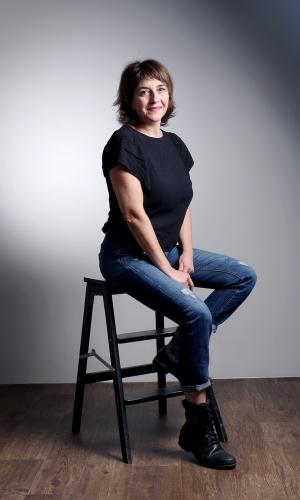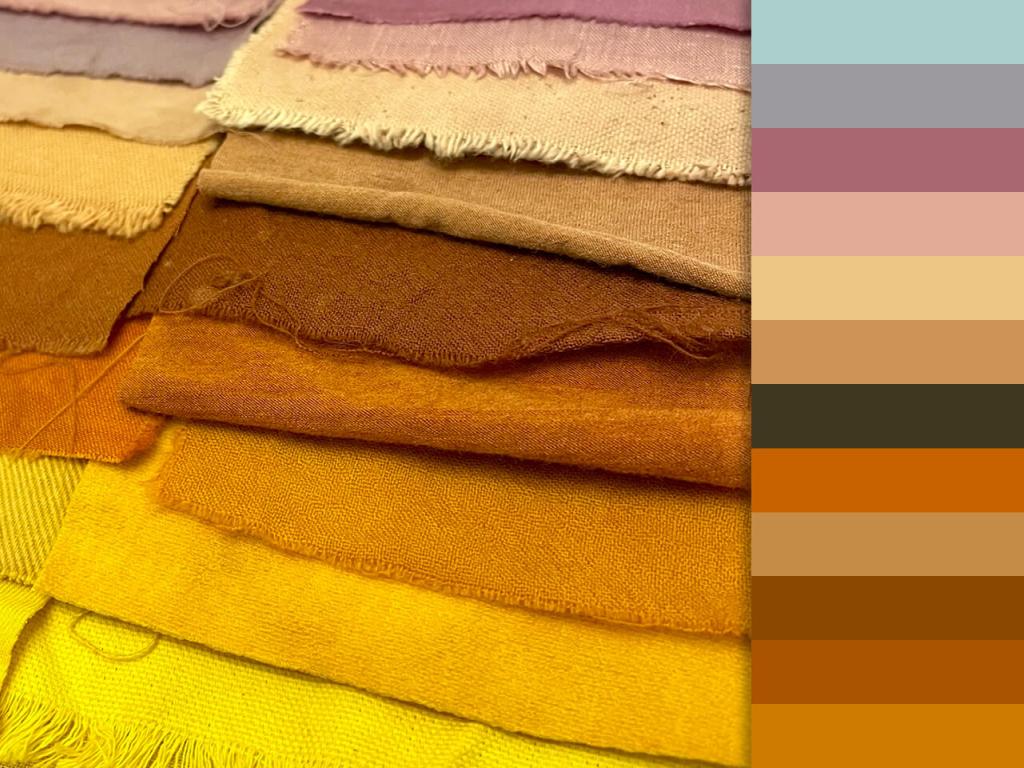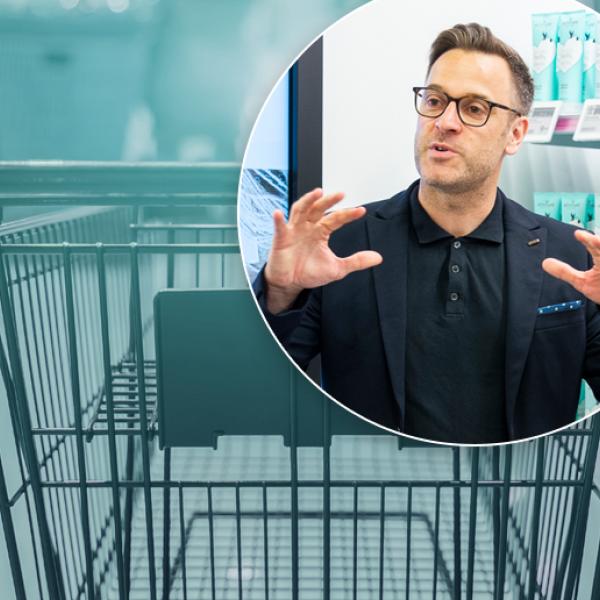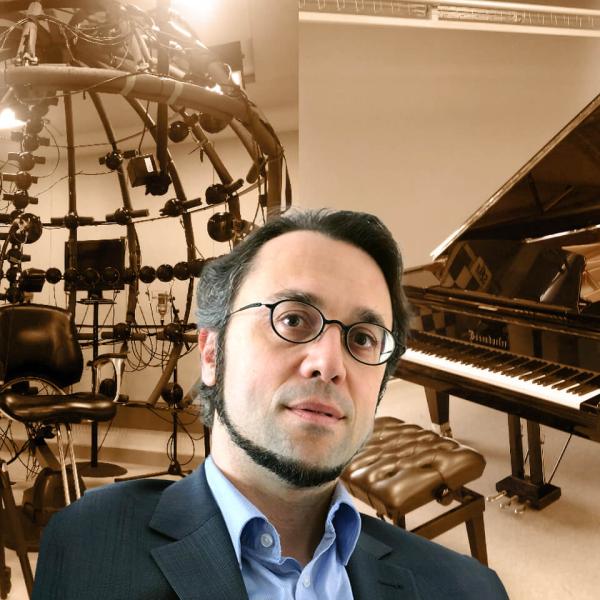In the 1960s a Spanish clothing designer began to produce lower-cost fashion that looked similar to the creations of high-end designers. Zara, the fast-fashion pioneer and now a shopping mall staple, was born.
Since then, fashion cycles have forced clothing to be made quickly, in massive quantities and of cheaper materials. Most of these fabrics are steeped in vats of toxic dyes, only to fade after three or four washes and release their microplastics into our water.
We could rattle off plenty of harmful, dispiriting practices of the textile industry. But instead, let’s hear from a textile designer who remains optimistic in the face of the pitfalls of her trade.
Vanessa Mardirossian shared her thoughts (and solutions!) with us about the issue of harmful, polluting fashion.
She is an expert in eco-friendly fashion design, a PhD candidate and public scholar at Concordia University, a teacher at the Université du Québec à Montréal’s (UQAM) École supérieure de mode, a member of Acfas, Concordia’s Research Chair in Critical Practices in Materials and Materiality and Hexagram (see below to find out more about Hexagram), an international network funded by the CFI and dedicated to research creation in media arts, design, technology and digital culture.
Your background is atypical and therefore interesting. What prompted you to give up textile design and the fashion industry to study the effects of toxic textile dyes on human beings?
After studying fashion and textiles, I worked for more than 20 years as a textile designer in the fashion industry in Paris, London and Montréal. In my boutique workshop in my hometown of Nice, in the south of France, I designed exclusive prints for haute couture, ready-to-wear and trend studios.
I would use a large heat press to print polyester at 200 degrees Celsius, and I worked without any ventilation because I had no idea this printing method could be harmful to one’s health. But polyester contains phthalates, which are chemicals used in plastics to soften them and make them more flexible. When heated, phthalates turn into a gas, and I was breathing these airborne particles, which are now considered to be endocrine disruptors.
My throat was often sore, and I went through four years of infertility. Then, in 2008, my second child was born with a genetic mutation and developmental delays. But I didn’t make the connection right away. It was only in 2012, when I started reading the first Greenpeace reports (Toxic Threads) about textile toxicity and the risks of interactions with the human body at the cellular level that the thought of cause and effect started to take root in my mind. This trigger clearly impacted my practices as a designer!
So, you changed your career path?
In a way, yes, but what I really wanted was to pass on my knowledge. At that stage of my career as a designer, I had gone beyond garment fit and aesthetics. I had a 360-degree view of fashion, and I wanted to pass it on in order to raise awareness of the connections between design, health and society.
In 2017, I started teaching textile design at the École supérieure de mode at the Université du Québec à Montréal’s School of Management Sciences, and I started a research creation as part of my doctoral program at Concordia University. These two activities would allow me to reflect on the interplay between design, chemistry and environmental health and study the synergy between the material world of textiles and the living world.
At the outset, I contacted a number of researchers, including Sébastien Sauvé at the Université de Montréal, who had just completed a pan-American report (Commission for Environmental Cooperation, 2017) showing that perfluoroalkyls could penetrate the body through sweat. These flame-resistant substances appear in some clothing items that touch the skin. As early as the 1970s, biologist Arlene Blum criticized the fact that these fire-retardant substances were found in textiles made into children’s pyjamas. She revealed that what we wear on our skin can enter our bodies, because these substances were turning up in their urine.
What is the goal of your thesis?
The subject of dyes is still widely misunderstood due to its complexity, so, for my doctorate, I wanted to take a multidisciplinary approach to better understand the dye toxicity. And in doing so, I aim to make an ethical and eco-responsible contribution to the field of textile design. My aim is to share best practices in non-toxic dyeing with the fashion industry.
Under the supervision of Larissa Takser, an environmental health researcher at the Université de Sherbrooke, I began directed reading with the aim of reviewing all the relevant literature. I will present a literature review in my thesis, which I will defend and publish in September 2024.
At the same time, I conducted 20 or so interviews with colour experts, including Dominique Cardon, who is a historian, Patrick Brenac (Green’ing founder), who has a PhD in plant extracts, and Kathy Hattori (President of Botanical Colors), who works on eco-friendly dyes. Each of them, in their own way, showcases the benefits of natural dyes in comparison with synthetic dyes.
I also chose to be supervised by chemist Yves Gélinas at Concordia University to guide my molecular dye analyses and help me become familiar with their components. This scientific approach allows me to really dig into the tangible reality of dyes’ harmful effects on the human body.
And what has your research unearthed?
I’ve learned that chronic low-dose exposure of body cells to azo dyes, including the disperse dyes that make up most textile dyes, can cause irreversible damage to our health. These dyes are likely to be mutagenic, carcinogenic, reprotoxic and neurotoxic.
In my opinion, it’s no coincidence either if more and more children are being born with learning difficulties or autism spectrum disorder. Infertility and hormone-dependent cancers are also on the rise.
The textile industry exposes us, in the womb and throughout our entire lives, to a cocktail of chemicals that are harmful to our health. We must warn the population and make them aware of the fact that the increasingly unbridled demand for clothing made at rock-bottom prices causes more harm than good.
But this is a worldwide issue. How will we be able to change our consumption habits on a global scale?
It’s a complex problem, and I think it needs a systematic approach. Popularizing science and proactive education have a major role to play here. So, I’m developing engaging communication strategies that take three target audiences behind the scenes of research: designers, decision-makers (manufacturers, politicians and economists) and the general public.
I suggest that we should know more about how our manufacturing processes impact living things. I’ve called that “Textile Ecoliteracy.”
And what does it entail?

First of all, I recently published two articles, in The Conversation (What designers can do to make textiles healthier for people and the planet, November 15, 2023) and Le Devoir (L’industrie textile s’interroge sur son avenir Post-COP28, December 16, 2023 [French only]), in which I address these public health issues and the crucial role that design can play.
Secondly, as I am interested in industrial ecology and how we can use one industry’s waste as another industry’s resource, I meet with manufacturers.
In this respect, I have had conversations with business owners of Cintech in Saint-Hyacinthe, which uses food waste to develop food dyes. During our meeting, they expressed an interest in developing textile dyes as well. I think that’s a market that’s ripe for the taking. In fact, in 2021, the College Centre for the Transfer of Technologies in Saint-Hyacinthe established an EcoTextile Research Chair with the goal of leading various research and development activities to support an eco-friendly transition of the textile industry. Things are happening!
My work also materializes in symposiums, workshops, exhibitions, videos (All linked in the web of life!, March 2023), and live social media conversations (Instagram AMA [Ask Me Anything], December 2023). These real-time interactions boost the understanding and reach of my message.
Finally, as a designer with an industry background, I take a highly pragmatic approach to research — I want it to be rooted in the reality on the ground. To that end, I’m actively involved in developing the Fibershed Quebec project. Fibershed is a movement that started in California in the 2010s under the leadership of Rebecca Burgess, who challenged herself to wear only clothes that were sourced within 200 kilometres. She had to find out who could grow the plants that could be transformed into fibre, who could weave them, who could knit or sew them, and so on. Rebecca mapped all this know-how and created a model that she published in a book in 2019. It’s now being used in 60 regions throughout the world. The Quebec branch was founded in May 2022 by Marie-Ève Faust, who was director of the École supérieure de mode ESG UQAM at the time. The idea was to be able to say, “Here are our local resources. Let’s do things differently.”
What do you want your legacy to be?
My dream is for my thesis to drive change, not just by suggesting eco-friendly solutions, but by inspiring a new generation of thinkers and players in the textile-clothing industry. I’d love to see a real transformation in the industry!
It’s a global public health issue. That’s why we have to reinvest in research and development, shift our thinking and change our mindset! We all need to react, and act quickly!
Through the CFI’s first funding round (2001) and a renewal (2009 – Concordia), Hexagram has developed a world-renowned research creation model. Hexagram has two research centres, one at UQAM and the other at Concordia University, which have also partnered with researchers at Université de Montréal, Université McGill, Université Laval and the École de technologie supérieure. Hexagram generates fruitful collaboration between the two largest visual arts and media departments in Canada and among well-known researchers working in related disciplines (design, communication, theatre arts, music). Research creation is a model that integrates theory and practice, experimentation and creation. Members’ work focuses on two main themes: 1) developing and refining technology and interfaces that can be used in media communications and the arts, and 2) designing and performing experiments and creations using these technologies. By training highly qualified personnel and shining the spotlight on a variety of local and international scenes, Hexagram is a driving force for technology developed in Quebec. In designing new ways of doing things, researchers encourage companies to develop new technologies. |






